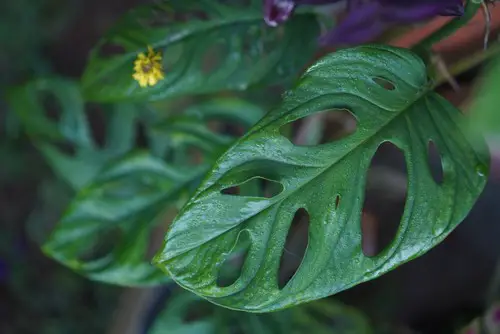Dry brown spots on Monstera leaves can be a cause for concern for plant owners. These unsightly spots can indicate a problem with the plant’s health and may lead to further damage if left untreated.
Understanding the causes of brown spots on Monstera leaves, as well as prevention and treatment strategies, is essential for maintaining the plant’s health and appearance.
There are several common causes of brown spots on Monstera leaves, including improper watering, low humidity, nutrient deficiencies, and pest infestations. Identifying the type of brown spot on the leaves can help determine the cause and appropriate treatment.
Some brown spots may be due to natural aging or environmental stress, while others may be a result of diseases or pests.
Preventing brown spots on Monstera leaves involves providing the plant with optimal growing conditions, such as proper watering, adequate humidity, and appropriate lighting. Regularly inspecting the plant for signs of pests or diseases and addressing any issues promptly can also help prevent brown spots from developing.
Treatment options for brown spots may include adjusting watering and fertilization, using insecticides or fungicides, or removing affected leaves.
Understanding Brown Spots on Monstera Leaves
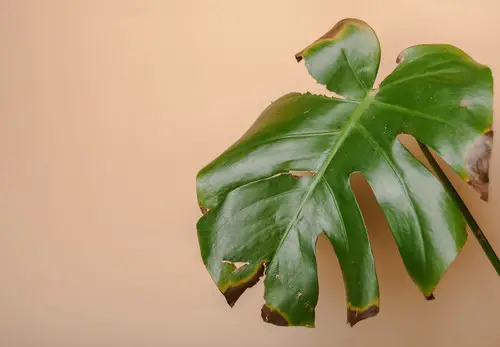
Monstera plants are known for their beautiful foliage, but sometimes brown spots can appear on the leaves, which can be concerning for plant owners. Brown spots on Monstera leaves can be caused by a variety of factors, including disease, pests, or environmental stressors.
Brown spots on Monstera leaves can vary in size and appearance. They can be small or large, and can appear as dark spots or discoloration on the leaves. Brown spots can also be a sign of disease, such as bacterial leaf spot or fungal leaf spot.
Environmental factors can also cause brown spots on Monstera leaves. Too much direct sunlight can cause the leaves to scorch, which can result in brown spots. Overwatering can lead to root rot, which can cause brown spots on the leaves.
Pests can also cause brown spots on Monstera leaves. Spider mites and thrips can cause discoloration and dark spots on the leaves. Rust, a type of fungal disease, can also cause brown spots on Monstera leaves.
In order to treat brown spots on Monstera leaves, it is important to identify the underlying cause. If the cause is environmental, such as too much sunlight or overwatering, adjusting the plant’s care can help prevent future brown spots. If the cause is disease or pests, treating the plant with the appropriate remedy can help eliminate the problem.
More posts on this category:
- Brown Spots on Desert Rose Leaves
- Cucumber Leaves Turning Yellow with Brown Spots
- Chinese Evergreen Brown Spots on Leaves
Dry Brown Spots on Monstera Leaves – 5 Common Problems
Monstera plants are known for their beautiful, glossy green leaves. However, when brown spots start to appear, it’s a sign that something is amiss. Brown spots can be caused by a variety of factors, some of which are easy to fix, while others require a bit more attention.
1. Overwatering
One of the most common causes of brown spots on Monstera leaves is overwatering. When the soil remains soggy or too wet for an extended period, it can lead to root rot, which can cause brown spots to appear on the leaves.
To avoid overwatering, make sure that your Monstera plant is in a pot with good drainage holes and that you are not watering it too frequently.
2. Underwatering
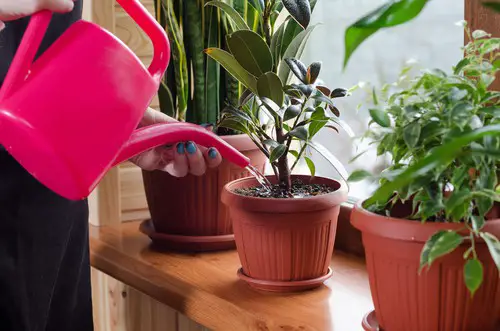
On the other hand, if you are not watering your Monstera plant enough, it can also lead to brown spots on the leaves. When a plant is dehydrated, it can’t absorb water and nutrients properly, which can lead to brown spots. To avoid underwatering, make sure that you are watering your Monstera plant regularly, but not too frequently.
3. Temperature and Humidity
Temperature and humidity can also play a role in the appearance of brown spots on Monstera leaves. If the temperature is too hot and dry, the plant may suffer from heat stress, leading the plant to wilt. Leaves start showing brown spots until it gets brown and crisp. When it’s too cold, the Monstera leaves may develop chill spots due to contact with cold.
4. Disease and Pests
Multiple pests and fungal diseases can lead to smaller, contained brown spots on Monstera leaves. Scale are brown to black insects that may resemble a raised spot on the leaf but instead are a pest feeding on sap.
Fungal leaf spot causes sunken brown spots, as the name suggests. Bacterial leaf spot is another common disease that can cause brown spots on Monstera leaves.
5. Nutrient Deficiencies
Nutrient deficiencies can also cause brown spots on Monstera leaves. If your plant is not getting enough of the nutrients it needs, it may start to show signs of stress, including brown spots on the leaves. Make sure that your Monstera plant is getting the right amount of water and nutrients and that you are fertilizing it regularly.
Identifying Different Types of Brown Spots
Dry brown spots on Monstera leaves can be caused by various factors, including environmental stress, pests, and diseases. Identifying the type of brown spot is crucial to determine the appropriate treatment.
1. Edge and Halo Brown Spots
Edge brown spots are brown spots that develop on the edges of the leaves. They can be caused by over-fertilization, which can lead to salt buildup in the soil. Halo brown spots, on the other hand, are brown spots with yellow halos. They can be caused by bacterial leaf spot, a common disease that affects Monstera plants.
2. Rust Brown Spots
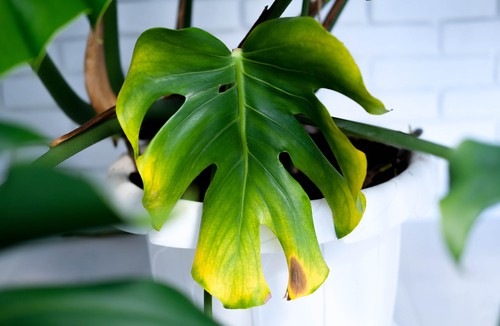
Rust brown spots are small, circular brown spots that can be found on the upper surface of the leaves. They are caused by a fungus called Puccinia philodendron, which thrives in warm and humid conditions.
3. Scorching Brown Spots
Scorching brown spots are caused by too much exposure to direct sunlight. They are characterized by dry, crispy leaves with brown spots.
4. Wet and Mushy Brown Spots
Wet and mushy brown spots are caused by overwatering, which can lead to root rot. The affected leaves may turn yellow and eventually brown, and the stem may become soft and mushy.
5. Yellowing and Brown Leaves
Yellowing and brown leaves can be caused by a lack of nutrients, particularly iron. Iron deficiency can cause the leaves to turn yellow and then brown.
Prevention Strategies for Brown Spots
To prevent brown spots from appearing on Monstera leaves, it is essential to understand the factors that cause them. Some of the key factors that contribute to brown spots on
Monstera leaves include overwatering, direct sunlight, low humidity, and poor soil quality. Here are some prevention strategies that can help keep Monstera leaves healthy and spot-free.
1. Watering
One of the most common reasons for brown spots on Monstera leaves is overwatering. To avoid this, it is essential to water the plant correctly. Monstera plants prefer to be kept on the drier side, so it is recommended to let the soil dry out partially before watering again.
Always ensure that the soil has proper drainage holes to prevent water from accumulating at the bottom of the pot.
2. Light and Humidity
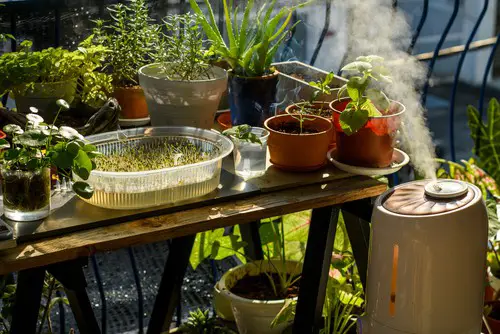
Monstera plants prefer bright, indirect light and high humidity levels. Direct sunlight can cause brown spots to appear on the leaves, so it is crucial to keep the plant away from windows or areas with direct sunlight. To increase humidity levels, consider using a humidifier or placing a tray of water near the plant.
3. Soil and Airflow
The soil quality and airflow around the plant also play an essential role in preventing brown spots on Monstera leaves. Ensure that the plant is potted in a well-draining soil mix that allows for proper airflow. Consider adding perlite or sand to the soil mix to improve drainage and aeration.
4. Water Quality
The quality of the water used to water the Monstera plant can also impact the health of the leaves. Chlorinated tap water can harm the plant, so it is recommended to use filtered or rainwater instead. If filtered or rainwater is not available, allow tap water to sit for 24 hours before using it to water the plant to allow the chlorine to dissipate.
Treatment Options for Brown Spots
If you notice brown spots on your Monstera leaves, it’s important to take action to prevent the issue from getting worse. There are several treatment options available to help your plant recover.
1. Prune Infected Leaves
One of the most effective ways to treat brown spots on Monstera leaves is to prune the affected leaves. This will help prevent the spread of any disease or pests that may be causing the problem. Use a clean pair of pruning shears to cut off the infected leaves, making sure to cut the stem as close to the base of the plant as possible.
2. Use Fungicide
If the brown spots are caused by a fungal infection, using a fungicide can help treat the problem. Be sure to choose a fungicide that is safe for Monstera plants and follow the instructions carefully. Apply the fungicide to the affected leaves and the surrounding soil to help prevent the spread of the infection.
3. Repot the Plant
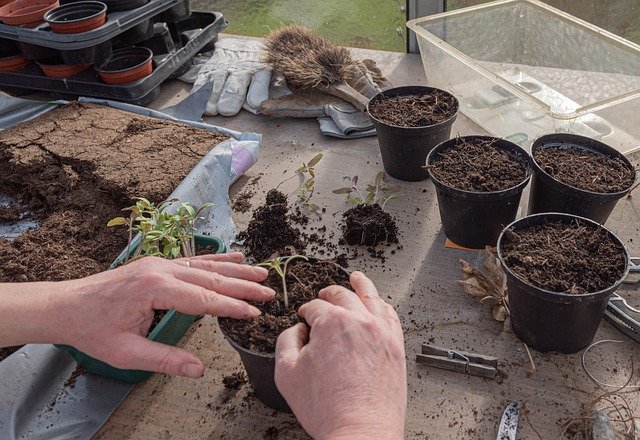
If the brown spots are caused by overwatering, it may be necessary to repot the plant. Choose a pot with good drainage and fresh soil that is well-draining. Be sure to remove any damaged or rotted roots before repotting.
4. Increase Humidity
Monstera plants thrive in humid environments, so increasing the humidity around your plant can help prevent brown spots from forming. Misting the leaves regularly or using a humidifier can help increase the humidity levels. Placing a pebble tray filled with water near the plant can also help increase humidity.
5. Prune Regularly
Regular pruning can help prevent brown spots from forming on Monstera leaves. Prune away any yellow or damaged leaves, and remove any dead or dying stems. This will help keep your plant healthy and prevent any issues from developing.
Understanding the Impact of Brown Spots on Monstera Health
Brown spots on Monstera leaves can be a sign of various health issues, and it is essential to understand the impact they can have on the plant’s overall health. Monstera plants are known for their beautiful foliage, and brown spots can make them look weak, drooping, and unsightly.
Brown spots can occur due to various reasons, including leaf spot diseases, bacterial and fungal infections, dehydration, and overwatering. These spots can start small and then grow larger, running together, causing damage to the leaf tissue and weakening the plant.
Leaf spot diseases can cause brown spots on Monstera leaves, and it is essential to identify the type of disease to treat it effectively. Bacterial leaf spots can cause the Monstera to smell unpleasant, and the spots can start to enlarge and run together when the plant is subjected to overly wet conditions.
Fungal diseases can also cause brown spots on Monstera leaves, and they can spread quickly, causing damage to the entire plant.
Dehydration can also cause brown spots on Monstera leaves, and it is essential to ensure the plant is getting enough water. On the other hand, overwatered Monstera plants can also develop brown spots due to the accumulation of sap in the leaf tissue.
Brown spots caused by bacterial infections can be contagious, and it is essential to isolate the affected plant to avoid spreading the infection to other houseplants. It is also crucial to clean the pruning tools after use to prevent the spread of the infection.
Recognizing and Dealing With Pests and Diseases
Monstera plants are susceptible to several pests and diseases that can cause dry brown spots on leaves. It is essential to recognize the symptoms and act quickly to prevent further damage.
Diseases
Fungal and bacterial diseases can also cause brown spots on Monstera leaves. Bacterial leaf spot is a common bacterial disease that causes brown spots with yellow halos. Fungal leaf spot, caused by various fungi, can also cause brown spots on leaves.
These diseases can be prevented by avoiding overwatering and ensuring proper drainage. If the plant is infected, it is essential to remove the affected leaves and treat the plant with a fungicide or bactericide.
Pests

Insects and parasites are common pests that can attack Monstera plants. Spider mites and aphids are two sap-sucking insects that can cause brown spots on leaves. These pests can be controlled by washing the leaves with a mild soap solution or insecticidal soap.
Mealybugs and scale insects can also cause brown spots on leaves, and they can be removed by wiping the leaves with a cotton swab dipped in alcohol.
Root Rot
Root rot is a fungal disease that can cause brown spots on leaves due to the plant’s inability to absorb water and nutrients. Overwatering and poor drainage are the leading causes of root rot. It is essential to check the soil moisture regularly and ensure that the plant is not sitting in standing water.
If the plant is infected, it is necessary to remove the affected roots and repot the plant in fresh soil.
The Role of Nutrients and Water Quality
Monstera plants require a balanced supply of nutrients and water to maintain healthy foliage. Nutrient deficiencies can cause dry brown spots on Monstera leaves, as can poor water quality.
One common issue is tap water, which can contain high levels of chlorine or fluoride that can damage plant roots and leaves. Rainwater is a better option, but it may not always be available or practical. In such cases, filtered water can be used to remove harmful chemicals and minerals.
It is also important to ensure that the soil is well-draining and does not become waterlogged. Overwatering can lead to root rot and nutrient deficiencies, which can cause brown spots on the leaves. A good rule of thumb is to water the plant when the top inch of soil feels dry to the touch.
In addition to proper watering, fertilizing the Monstera plant with a balanced fertilizer can help prevent nutrient deficiencies. A lack of nutrients, such as nitrogen, phosphorus, and potassium, can cause brown spots on the leaves. A slow-release fertilizer can be applied every three to four months to ensure a steady supply of nutrients.
Finally, the quality of irrigation water can also affect the health of the Monstera plant. High levels of salts, such as sodium and chloride, can build up in the soil and damage the roots. Using a low-salt water source or flushing the soil periodically with fresh water can help prevent salt buildup.
Conclusion
Dry brown spots on Monstera leaves can be caused by a variety of factors, including pests, fertilizer problems, incorrect watering, water quality, and exposure to extreme temperatures and humidity. If you notice brown spots on your Monstera leaves, it is important to identify the underlying cause and take appropriate action to address it.
Proper care and maintenance of your Monstera plant can help prevent brown spots from forming in the first place. This includes providing the plant with the right amount of water, light, and humidity, as well as monitoring it for signs of pests or disease.
Regularly inspecting your Monstera plant for brown spots and other signs of stress can help you catch problems early and take corrective action before they become more serious. If you are unsure about how to care for your Monstera plant or how to treat brown spots on its leaves, consider consulting with a professional horticulturist or plant care expert.
Frequently Asked Questions
How do you get rid of brown spots on Monstera leaves?
To get rid of brown spots on Monstera leaves, it is important to first identify the cause of the problem. Overwatering, underwatering, pests, and diseases are common causes of brown spots on Monstera leaves. Once the cause is identified, the appropriate treatment can be applied.
For example, if the cause is overwatering, reducing watering frequency and improving drainage can help. If the cause is pests or diseases, appropriate treatments such as insecticides or fungicides can be applied. In some cases, it may be necessary to prune affected leaves.
Why are my Monstera leaves turning brown and crispy?
Monstera leaves can turn brown and crispy due to a variety of reasons, including overwatering, underwatering, low humidity, pests, and diseases. Overwatering can cause root rot, which can lead to brown and crispy leaves.
Underwatering can cause the plant to dry out and the leaves to wilt and turn brown. Low humidity can cause the leaves to dry out and turn crispy. Pests and diseases can also cause brown and crispy leaves.
Why does my Monstera have what looks like burn marks?
Burn marks on Monstera leaves can be caused by exposure to direct sunlight or heat. Monstera plants prefer bright, indirect light and can be damaged by exposure to direct sunlight. They also prefer temperatures between 65-85°F (18-29°C) and can be damaged by exposure to extreme heat.
Why does my Monstera have spots?
Spots on Monstera leaves can be caused by pests, diseases, or nutrient deficiencies. Pests such as spider mites, mealybugs, and scale insects can cause spots on the leaves.
Diseases such as bacterial leaf spot and fungal infections can also cause spots. Nutrient deficiencies, such as a lack of calcium or magnesium, can cause spots on the leaves.
Can brown Monstera leaves turn green again?
Brown Monstera leaves cannot turn green again, but new growth can be green if the underlying problem causing the brown spots is resolved. It is important to identify and address the cause of the brown spots to prevent further damage to the plant.
Should I cut brown spots off Monstera?
It is generally recommended to cut off brown spots on Monstera leaves to prevent further damage to the plant. However, it is important to identify and address the underlying cause of the brown spots to prevent them from recurring. If the cause is not addressed, cutting off the brown spots may only be a temporary solution.

Hey, I’m Lisa and I’ve been an avid gardener for over 30 years. I love writing, talking and living in the garden! Feel free to connect with me on my socials below

